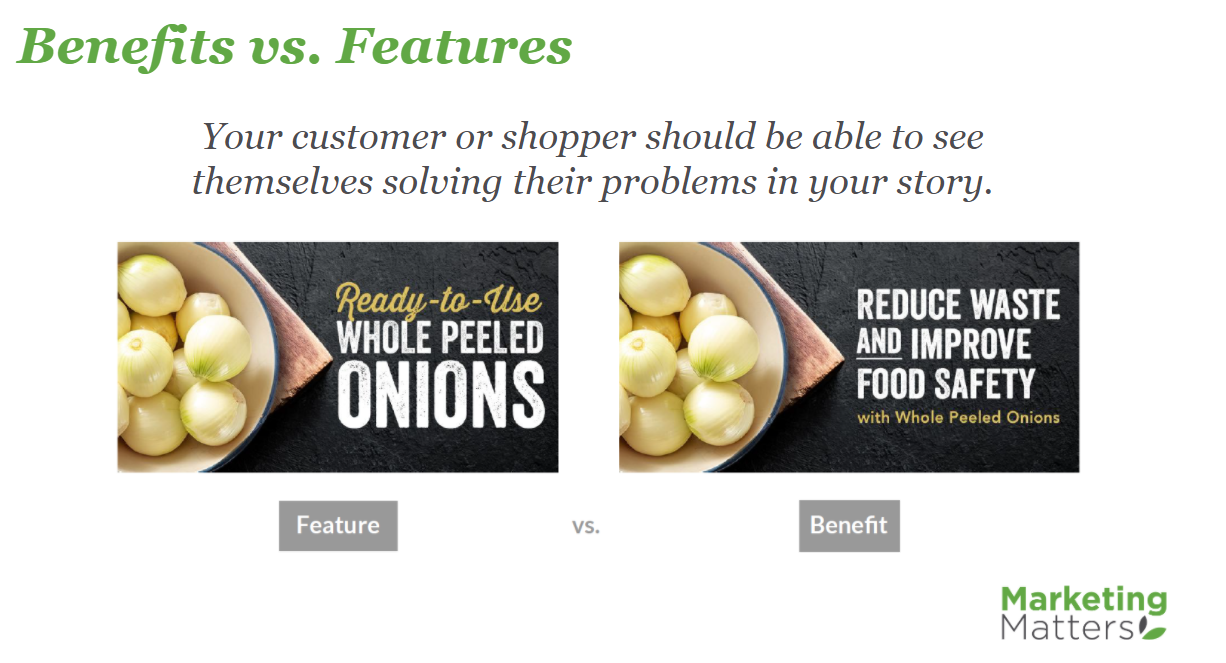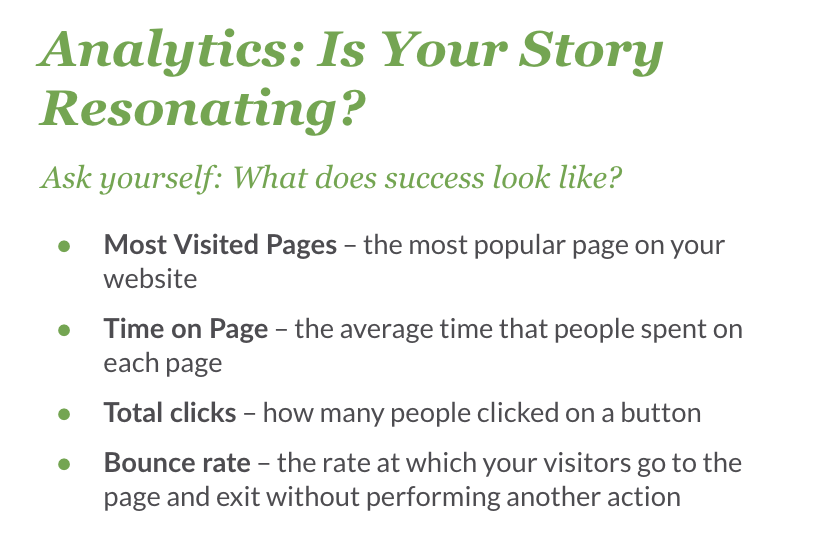Are your customers truly connecting with the story that you’re telling on your website? Who is your website built for exactly, you or your customer? How does a brand address telling a brand story on a website?
That’s what Mackenzie Wortham and Megan Zweig uncovered during our most recent Marketing Matters webinar. In this post, we’ll tee you up with the three components that were discussed and offer you a link to download the presentation.
3 Key Focus Areas to Telling Your Brand Story through Your Website
1. Messaging
Storytelling really is an investment in your brand’s success and it takes more than just telling your company’s story to do this well. Successful storytelling isn’t just the words or the message, it also includes a visual side. These are the elements of a great brand story:
Knowing your audience
Who are you trying to communicate with? For grower-shippers, we know we have two primary audiences – shoppers and our trade partners. When building the story that you want to tell on your website, it’s best that you identify which audience you primarily want your website to speak to, because at the end of the day you’re solving different problems for these audiences and they seek different information from you.
That’s not to say that if you choose to focus on shoppers that you cannot have any information for your partners on your website – many grower-shippers that we work with that are focused on the shopper have chosen to have their website speak primarily to the consumer, with either a separate microsite or landing page available for trade customers to offer them the detailed info that they need that would just confuse your shopper.
That’s just one level of knowing your audience. But it doesn’t just stop there. Take it a step further by identifying the demographics and preferences of your audience. If you are targeting shoppers, you’ll want to determine if your goal is to reach moms, or active, on-the-go types, or maybe you want to go after younger shoppers?
No matter who your audience is, you need to “get into their heads” and get a feel for what their likes, dislikes and pain points are. Same goes if you are focused on a B2B audience – ask yourself What keeps your customers up at night? What frustrates them? What would make their lives easier? Knowing these things means you are on your way to creating messaging that will resonate with your audience!
Focusing on value, advantages and differentiators
Once you know what keeps your audience up at night, you can drill into that to create a value proposition. For those of you that attended United Fresh BrandStorm last week, you may recall the opening session about building an ironclad brand where the speaker asked us to consider our “uncommon denominator.” It’s the intersection of your audience’s desires and your company’s strengths, but NOT your competitors strengths. What do you do best that your competitor does NOT? This is a great thing to focus on when elevating your value in your messaging.
Communicating your purpose
Do you know why your brand exists? This was a huge topic at PMA Fresh Summit last year if you recall.
You know your company’s history, core values, and mission. But have you shared what motivates you (your big “why”?”) with your audience? You need to know why you do what you do and then clearly communicate that. Authenticity is key here!
Solving a problem
Your products and services solve a problem. Think back to those values, advantages, and differentiators. They are uniquely positioning you to ease the pain points of your audience.
Are you saving them time or money? What are you doing better or faster? What are you doing that no one else is?
- It might be convenience products / helps me prep a meal faster
- Maybe it’s an unbeatable flavor or unique variety
- Maybe for a B2B message you’re offering a deeper level of customer service and customization compared to a competitor

2. Bringing it to Life
After reframing our messaging to tell a story where our audience is the hero, let’s turn our attention to brand visuals and the role they play in bringing a story to life.

- Branding consistency
- Including a clear call-to-action
- Consider current design trends
- Use of video
- Mobile optimization
3. Measuring Success
Some marketers aren’t making use of the analytics that are available to determine benchmarks and cues that gauge how well a brand story is resonating with the audiences visiting the website on a regular basis.
At DMA, we provide website analytics to our CEO and our clients on a monthly basis in a report format that we have learned to build to “tell a story” on its own! By doing this, over time we are able to identify trends, habits, preferences and more importantly, opportunities!

Click to get the full presentation now!
Measurements that are listed above like “Most Visited Pages”, “Time on Page”, “Total Clicks” and “Bounce Rate” all tell a marketer – “Hey, you really hit the nail on the head with that message” or “Uh oh, we saw a decline month over month, we need to recalibrate.” Either way, the gold in the analytics is the knowledge that we gain about our story, our product and perhaps most importantly, our customer.
Gain access to these and more take-aways when you download the presentation from this Marketing Matters Webinar! Use the information that we presented to help you tell your brand story better on your website.
Watch the full webinar here, or download the deck!
{{cta(‘c51e313a-a875-4361-bbd3-bea78a505011′,’justifycenter’)}}












